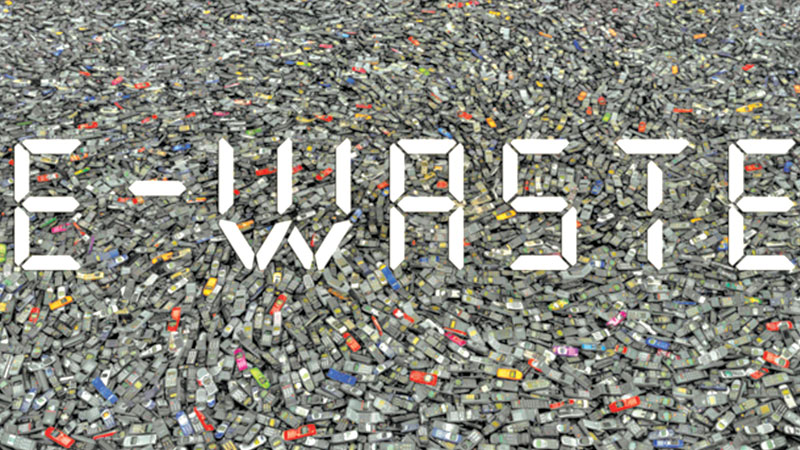According to recent media reports, negligence regarding electronic and electrical waste management is creating serious health and environmental hazards in the capital and elsewhere in the country. The problem has become widespread due to users leaving the wastes, generated by increasing use of electronic and electrical appliances, in open spaces. City corporations and municipal authorities are apparently unaware about massive electronic an electrical wastes being left in open spaces in the capital and elsewhere in the country every day.
The civic authorities don’t feel worried enough about the need to allocate resources or develop the manpower for safer disposal of abandoned noxious wastes considering that they were being recycled in Bangladesh.
But they know that abandoning out of order electronic and electrical appliances, or their parts, and leaving them in open spaces increased at a rapid pace in Bangladesh like just other countries.
As DNCC has no separate mechanism for disposing of e-wastes, they are usually dumped with domestic wastes at the Amin Bazaar Land Fill..Environmentalists have expressed serious concern over such handling of e-wastes containing mercury, lead, cadmium, zinc and other hazardous elements that don’t get dissolved.
Abandoned computers, mobile phones, electric cables, TV sets, coffee machines, fridges, air conditioners, photo copiers, ATM machines contain these and other hazardous elements. As heavy metals in e-wastes are harmful for health, environment and ecology, framing the rules for safe e-waste disposal by the DoE is underway. Hazardous elements in e-waste might cause kidney damage, cancer, asthma, nervous breakdown, early hair fall and other serious diseases. They also might cause infant-mortality and disabled births,
E-waste may become more severe in Bangladesh in the near future as the number of users of electrical and electronic appliances is rising very rapidly but neither the government nor the producers are taking effective steps for their safe disposal. In developed countries, formal recycling practices are taken very seriously. These e-waste management systems are comprised of three components: the national registry, collection systems, and logistics. The registry can be monitored by a variety of agencies and is essentially a list of e-waste producers with attached collection obligations.
In Western countries, replacing old electronic equipment frequently is very common. Given this trend, poor countries have long been a popular destination for the rich world’s unwanted trash. Many people around the world may be unaware of the fact that their old computers and televisions are shipped to different developing countries like Bangladesh for so-called ‘recycling’ purposes.



Recent Comments